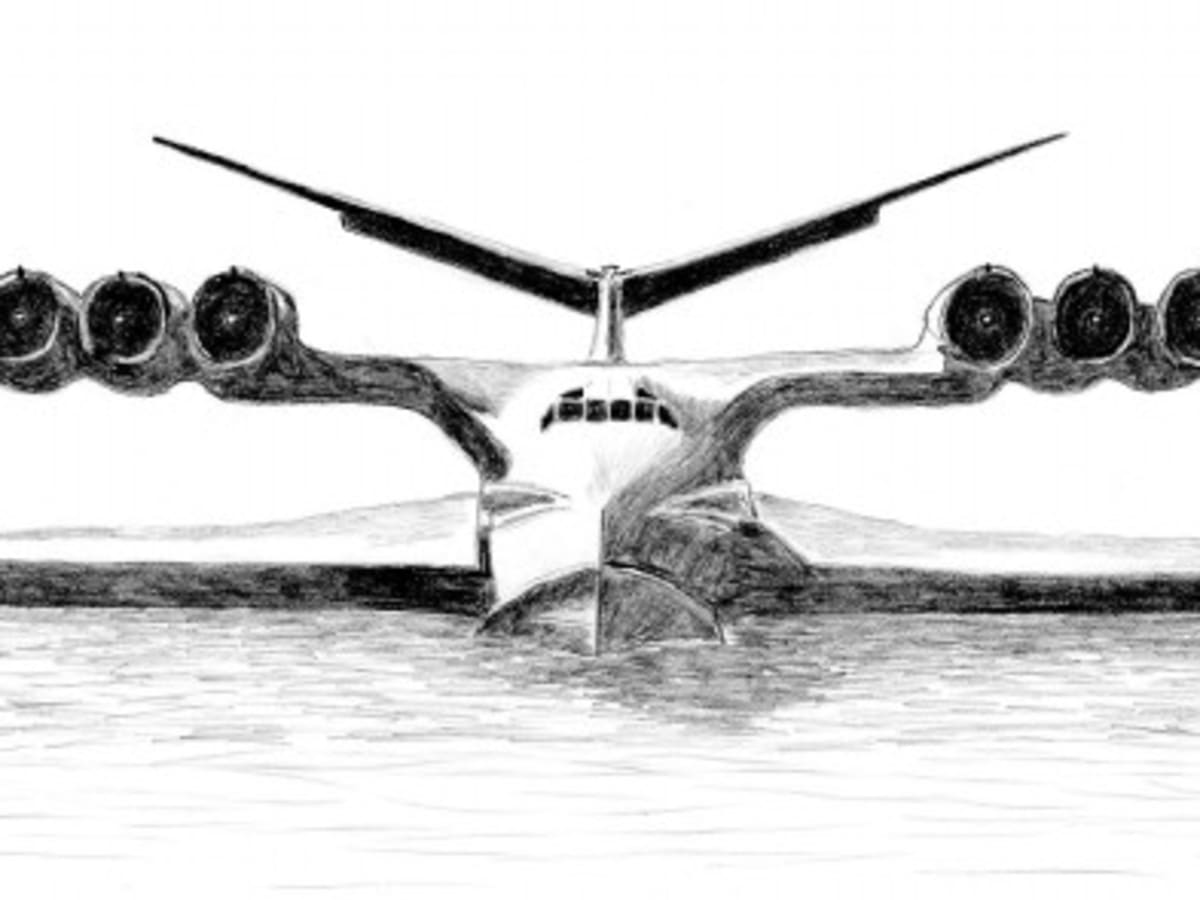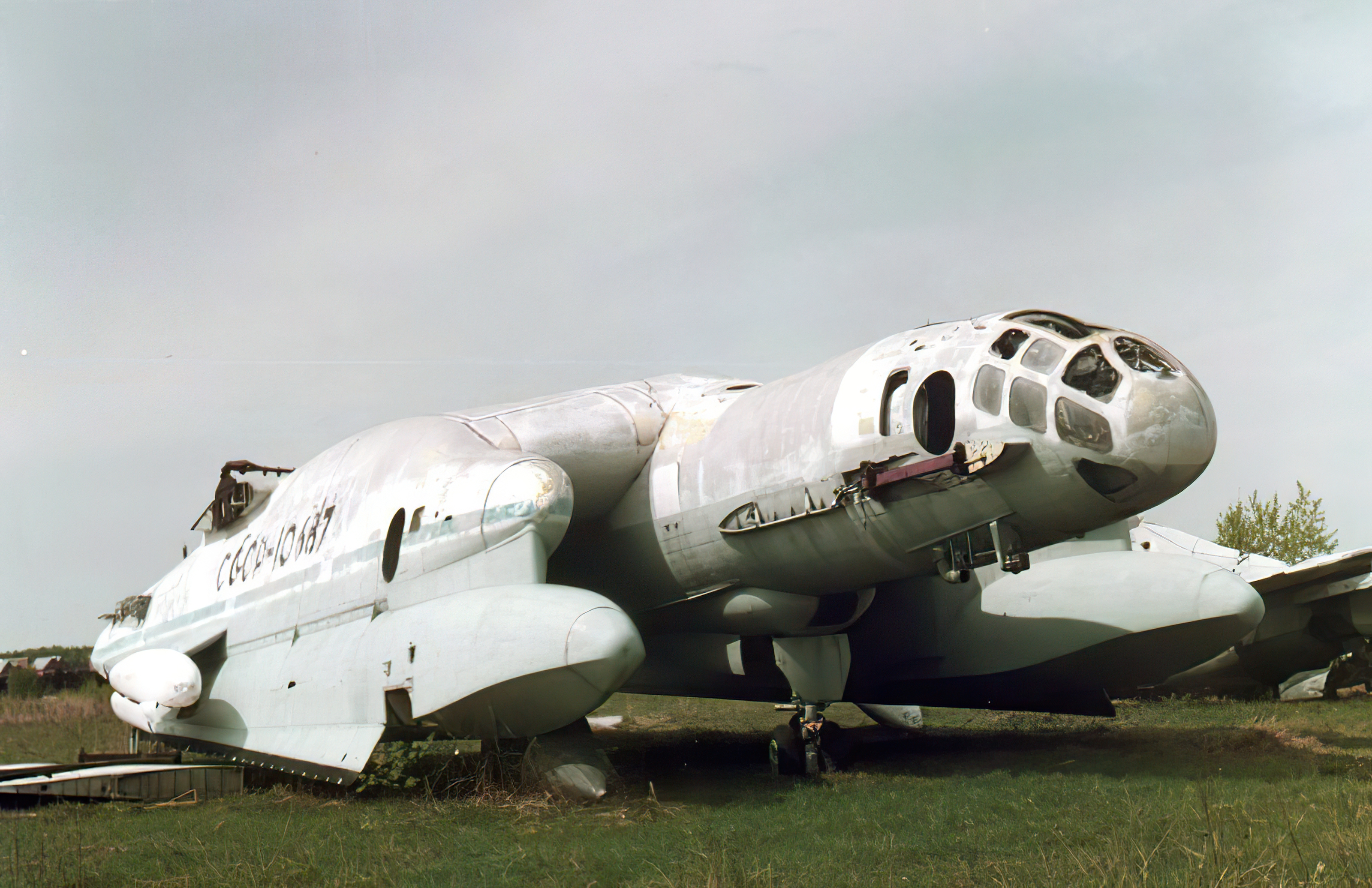Ground Effect Aircraft Carrier - Great Britain gives Ukraine a lot of artillery. Now the British army could get new and better weapons.
The heavily armed Lun Class Wing Ground Effect (WIG) aircraft can travel at speeds of up to 342 miles per hour, which is faster than warships.
Ground Effect Aircraft Carrier

This unique naval weapon combines a single sea-going Ground Effect aircraft with carrier-killing advanced missiles. Impressively fast and heavily armed, the Lun-class large-wing surface-to-aircraft (WIG) is the classic superweapon of the Cold War. One of the most unique and least understood naval weapons in the Russian Navy. In the 1980s, the Soviet Union planned to build eight to house US Navy warships. But like many of Russia's ambitious projects, it fell victim to the Cold War.
Concept Ships: Soviet Atomic Powered Ground Effect Light Carrier 19701 \
Now the only completed ship has made its final journey from the Caspian Naval Base to the park, which will be turned into a museum. The journey by barge on July 31 lasted 14 hours. This is in stark contrast to the incredible speeds you can achieve under your own power.
WIG art, known in Russia as Ekranoplanes, takes advantage of an aerodynamic phenomenon known as ground effect. It is a cushion of air that forms between the wing and the ground during low-altitude flight. This will greatly reduce drag, allowing the WIG to carry heavy loads over long distances, especially over water. The result is like a flying boat that flies very low and very fast.
The Lun class WIG was built in 1987 and commissioned in 1989. NATO took a close look and named the ship the Utka Class. The project was very expensive and only the first boat (the Russian Navy considered them a boat rather than an aircraft) was completed. The second one is almost finished.
The Fly's advanced missiles, known to NATO as the SS-N-22 Sunburn, made the Lun a formidable foe. It was larger and faster than the Harpoon missile in service with the US Navy. The aircraft will be only 16 to 32 feet above the ground and will detect a ship-sized target about 22 miles away. For a fly, this target is a perfect distance with minimal reaction time.
Russia Developing A New Air Riding 'sea Monster'
But US intelligence expected at least a few people to act together. One is moving forward, providing the latest targeting information beyond the radar horizon of a NATO warship. Mosquito rockets have a range of about 60 miles and can be fired using forward-looking ekranoplan data. A formation of three ships can simultaneously fire 18 missiles at a target, each of which travels at 3 times the speed of sound (called Mach 3).
NATO considered this type to be a coastal defense asset, playing a similar role to missile boats. But it can cover a larger area and respond more quickly to new threats. A Russian Navy press release says it plays a role against carriers. This suggests that the Lun's high speed and stealth (due to its low altitude) allow it to get close enough to launch its missiles.
Only Russia has attempted to create such a device. There have been regular reports that the second Lun airfield is being phased out as a search and rescue platform. Otherwise, production will continue mainly for use in the Arctic. It does not depend on costs.

There are many other WIGs, but they are all transient or experimental. The only navy currently using them is Iran, but these single-seaters are no match for the Lun.
Uss Nimitz Cvn 68 Class Aircraft Carrier Us Navy
Lun is displayed in the Patriot Park in Derbent on the Caspian Sea. It's the latest piece of rare art, but it remains one of the biggest "what if" questions that Cold War technology never served. The content of this article may be too short to properly summarize the main points. Please consider expanding the lead to provide an overview of all important aspects of the article. (August 2021)
Also known as a ground-effect vehicle (GEV), ground-effect wing (WIG), ground-effect craft, wing craft, flamethrower, or ekranoplan (Russian: екраноплан - "skreglider"). the movement of air over land by helping it to affect land or water. Generally, ground effect is designed to glide over a flat surface (usually over the sea) using the aerodynamic interaction between the moving wing and the ground. Some models can operate on any surface, such as frozen lakes or flat plains similar to a boat ramp.
This section requires additional citations for verification. Please improve this article by adding citations to reliable sources. Unauthorized material may be challenged and removed. (March 2018) (Learn how and why to remove this template message)
A ground impact vehicle needs a certain forward speed to produce dynamics, and the main purpose of using a wing in ground impact is to reduce the lift speed. A basic design principle is that the closer the wing is to the outer surface such as the ground in ground motion, the less drag it will have.
Vva 14 Ground Effect Aircraft Dreamt Of Dominating World For The Soviet Union
Air passing through the air increases the air pressure below and decreases the pressure above. The high and low pressures are maintained until the wings leave the ds, where they form stalls, which in turn are the main cause of lift drag - a significant part of the drag that normally affects an aircraft. The larger the wing span, the less inductance per unit lift and the higher the efficiency of a given wing. This is the main reason gliders have long wings.
Placing the same wing on a surface such as water or land has the effect of increasing aspect ratio
, but without the challenges of a long, flat wing, the short strips on a GEV can lift on par with a larger wing on a commercial aircraft, but only close to the ground. . After acceleration, some GEVs can avoid ground effects and become normal aircraft until reaching their destination. A differentiating feature is that it cannot land or take off without substantial ground support, and cannot fly until it reaches a higher speed.

A GEV is sometimes described as a cross between an airship and an airplane, but this is incorrect, as the airship is statically supported on an air bag pressurized by an onboard fan. Some GEV designs are used by Russian utility aircraft, such as the Lun and Dingo, to increase the high-pressure area under the wing to aid in takeoff; however, it differs from an airplane in that it requires forward motion to gain enough lift to fly.
Argentinian Aircraft Carrier Ara 25 De Mayo
Although the GEV is similar to a seaplane and may have many technical features, it is not designed for surface flights. Lacking the ability to fly at low speeds differs from an airplane in the same way that a fixed-wing aircraft differs from a helicopter. Unlike a hydrofoil, it does not touch the surface of the water during "flight". A ground impact vehicle constitutes a special vehicle class.
Based in Boston, USA, REGT proposed a high-wing electrically powered design with a conventional hull for water performance, and included fore and aft mounted hydrofoils designed to lift the craft out of the water during flight. to facilitate low climb rates.
Russian Rostislav Alekseev used it for ekranoplan. The wings are shorter than comparable aircraft, and this configuration requires a high aft horizontal tail to maintain stability. Depth and height stability comes from the elevator pitch
In terms of contact with the ground, a distinction is made between a low front wing (usually the main wing) and a rear, higher secondary wing that does not contact the ground (usually called a stabilizer).
Us Navy Is Not Sure If Its Sixth Generation Combat Aircraft Will Be Launched From An Aircraft Carrier
Designed by Alexander Lippisch, this wing allows for efficient ground flight by stabilizing itself. This is the basic B type of GEV.
Due to its similar airframe size, power and unique design, the GEV's lift-off engine significantly improves fuel economy and speed compared to a similarly powered aircraft. GEVs are also faster than similarly powered surface ships because they avoid water drag.
In water, the aircraft-like design of GEVs increases the risk of damage in collisions with surface objects. Additionally, the limited number of exit points makes it difficult to evacuate the vehicle in an emergency.

Since most GEVs are designed to operate in water, crashes and gas failures are generally more dangerous than with land-based aircraft, but lack of altitude control gives the pilot less chance to avoid collisions and to some extent negates this benefit. . Low altitude causes high speed ships to collide with ships and buildings
How India Reacted To The Deployment Of Us Aircraft Carrier 'enterprise' In The Bay Of Bengal
Ground effect, ground effect aircraft for sale, ground effect aircraft, ground effect aircraft plans, wing in ground effect aircraft, aircraft ground, ground carrier, soviet ground effect aircraft, ground effect aircraft kits, ground effect aircraft russian, aircraft carrier, aircraft carrier museum ships
0 Comments